Apple Vision Pro - The Progressive Review
We are starting something new called a Progressive Review. It's a familiar idea, as many people already do reviews at different times. But we will cover everything from "Pre-Ordering" to "1 Year Later." This way, users can find all the info they need in one place without looking for separate reviews.
Table of Content
※ Newest Sections ※
—
The Pre-Order
On January 19th, a big day for tech, something exciting happened. At 8 am EST, Apple introduced the Vision Pro. Designed by Apple in California and likely made in China, this advanced device became available for pre-order. People eager to spend over $3500 plus tax started placing their orders.
Did I manage to get one on launch day despite the excitement and rumored low stock? Yes, I did! I had a clear strategy and chose a less common path. Instead of picking it up from the store, I had the headset shipped directly to my home.
The Apple Store on launch day is full of excitement and chaos, a charm I've grown distant from. The constant activity and energy of fans in one place are impressive, but I now prefer to watch from afar. From the comfort of my bedroom, I watch the excitement on TV, away from the crowds. I'll happily wait for my Apple Vision Pro to arrive, probably sometime between 9 am and 9 pm, in my pajamas.
The Process
At 8:02 am EST, something exciting happened. I was watching closely when the Apple Store page changed from the "Back in a Blink" message to product listings. I focused on the blue "Pre-order" button I had been waiting for.
The silence in my room made my heartbeat louder. Time seemed to slow as I reached for the mouse, filled with excitement. The clear click of the mouse over the "Pre-order" button started an exciting adventure.
I quickly used Face ID to ensure Apple sent the right head strap. I chose the 256GB option and paused before getting Apple Care because it could cost $2400 to fix. However, after considering AKKO's insurance limits, I decided to add it later.
Thanks to my years of experience with computers, going through "Add to Bag" and "Review Bag" was quick and easy. Logging in and checking out were simple steps, and choosing delivery was easy with the auto-filled information. It made everything convenient.
I carefully entered each payment detail to ensure the security of my order. Even though I was in a hurry, I took a moment to double-check everything.
With one last click to confirm, I finished the order. It only took 2 minutes, but it was so exciting that my heart raced. What started as a normal morning turned into an exciting story of technology, anticipation, a big investment, and fate all coming together in a great moment.
The Reviews
During the review period with the headset, it felt like exploring a new digital world. Watching tech experts made it more fun. Their thoughts and experiences made me even more excited about the product's release.
iJustine's video was fun and made unboxing the headset exciting. Her excitement was catchy, making every app and game feel like an adventure. It wasn't just a review; it felt like she was showing endless possibilities and the joy of a tech fan.
Brian Tong's review felt like a chapter in my tech journey that began when I was just 12 years old (I'm 28 now). I've watched him evolve from a young host at CNET's Apple Byte to a wise tech guru. His words carried the weight of all those years, mixing nostalgia with deep insights. His balanced take on the headset guided me through its highs and lows, reminding me to be cautious with first-gen technology.
The Verge's critique made me think. My mom said, "I don't want to watch this video; he's always cynical and pessimistic as if he can make a better one. People put their blood, sweat, and tears into making that thing." Her view made me realize the human side of technology and the hard work creators put in.
I usually agree with The Verge's skeptical take on new products, which helps balance my excitement. But I also see my mom's point. When Nilay reviews an Apple product, he often seems too critical. While his critiques can be helpful, they sometimes feel too negative.
The Wall Street Journal's review was a delightful change of pace, showing how the headset can add a bit of magic to everyday life. The coolest part was seeing the device used in the kitchen with an app called Croutons. This app, made for cooking fans, turns the headset into a handy kitchen tool, letting you manage recipes and time your cooking perfectly.
It was so cool to watch augmented reality put timers right on the dishes. It gave a clear look at a future where tech and daily tasks mix smoothly, making even simple activities special.
Scott Stein from CNET was like a guide through the storm of info on the headset. His detailed and clear review helped me understand the device's cool features and potential issues. Stein has a knack for breaking down complex products, and he did just that with the headset, showing both its innovative parts and areas needing work.
His review was both useful and down-to-earth. He acknowledged the headset's cutting-edge tech but balanced it with his seasoned wisdom. His straightforward advice really stuck with me: "If you've got the money, it's great, but remember, it's a first-gen product." This practical tip highlighted the need to balance excitement about new tech with the reality of first-gen product challenges, helping make a well-informed decision.
Delivery
I woke up at 5 am with the first light of dawn. I couldn't sleep because I was so excited. I grabbed my phone, hoping to see that the headset was closer to arriving. But nope, it was still stuck in Louisville, Kentucky, and now it said it would come on Monday the 5th. Talk about a letdown. I felt pretty bummed and went back to sleep.
When I woke up again at 8:15, I saw a new message: "Out for Delivery." Suddenly, I was excited again. The day went from disappointing to full of promise.
The rest of the day was torture, though. Every minute felt like an hour. I kept checking the time, feeling more impatient with each passing second. Finally, at 5:47 pm, after what felt like forever, the package arrived. Seeing it at my door was such a relief. It wasn't just the end of a long wait; it was finally having the headset in my hands. All that waiting set the stage for what was inside that package.
The Unboxing
When the package arrived, it grabbed my attention right away. The box was big and heavy, holding not just the Vision Pro but also a bunch of accessories. As I stood there, my all-day anticipation turned into real excitement. This wasn't just a package; it felt like a gateway to a whole new experience. The box promised all kinds of cool things inside.
Here are some Photos :)
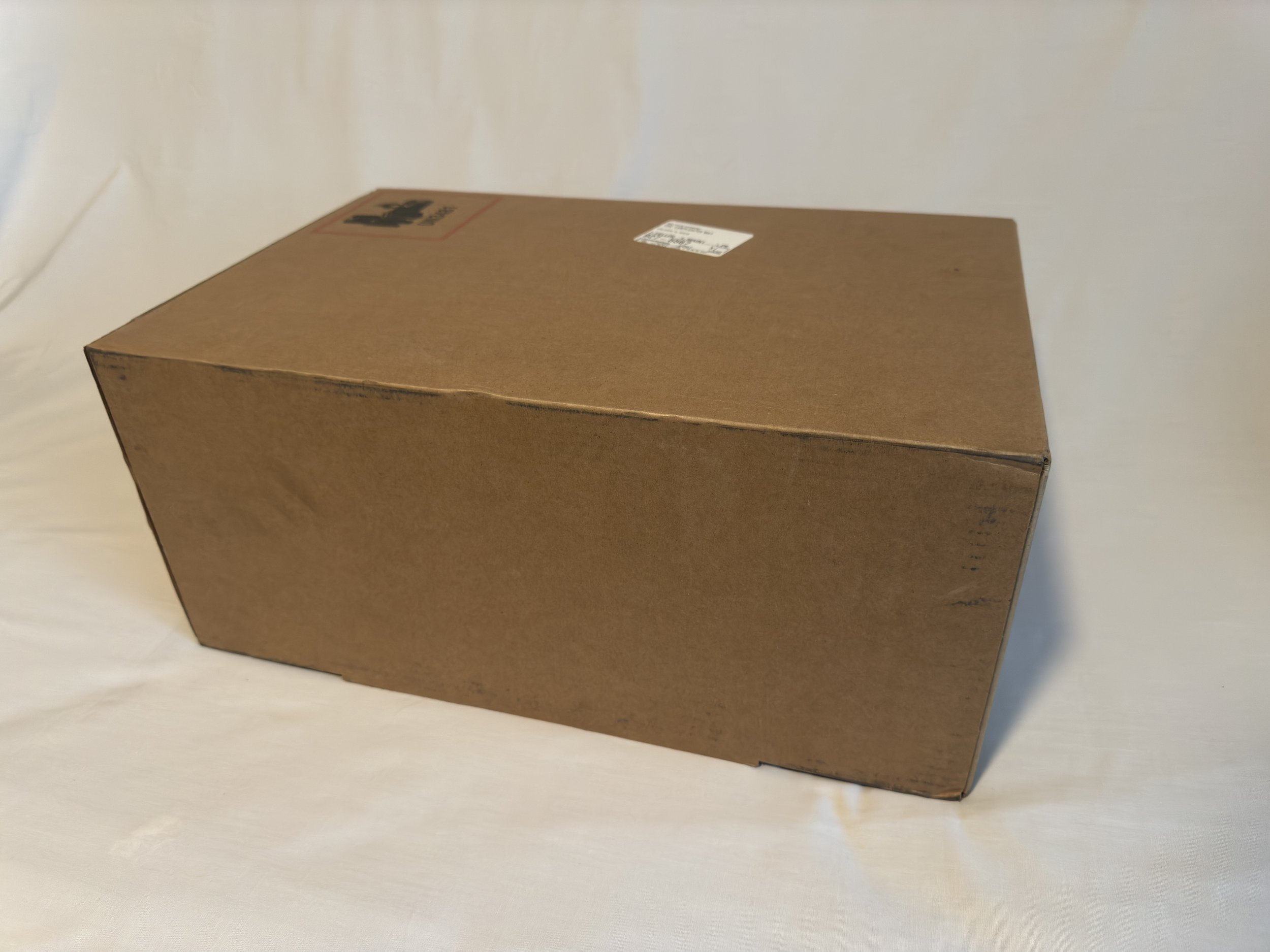

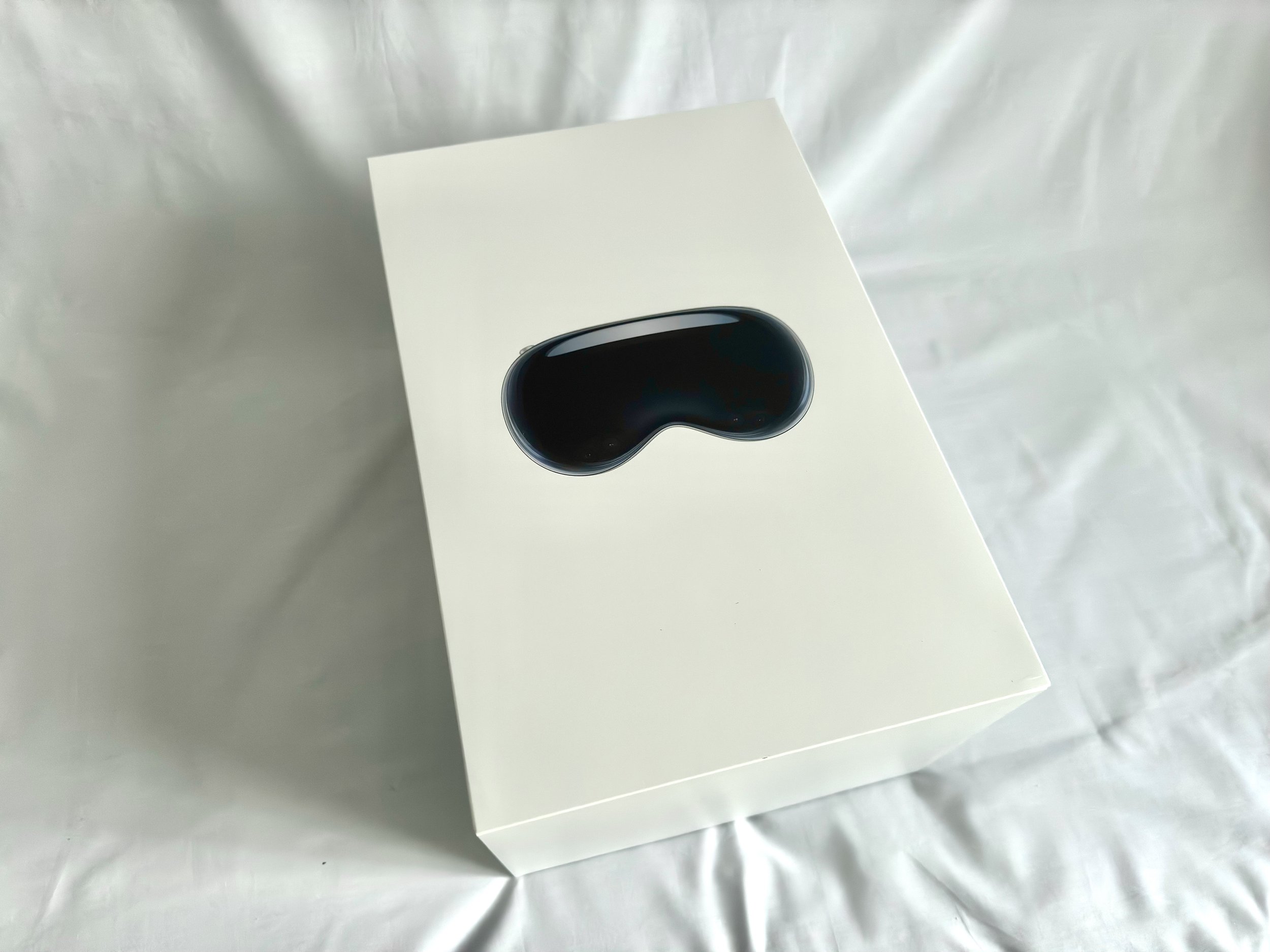
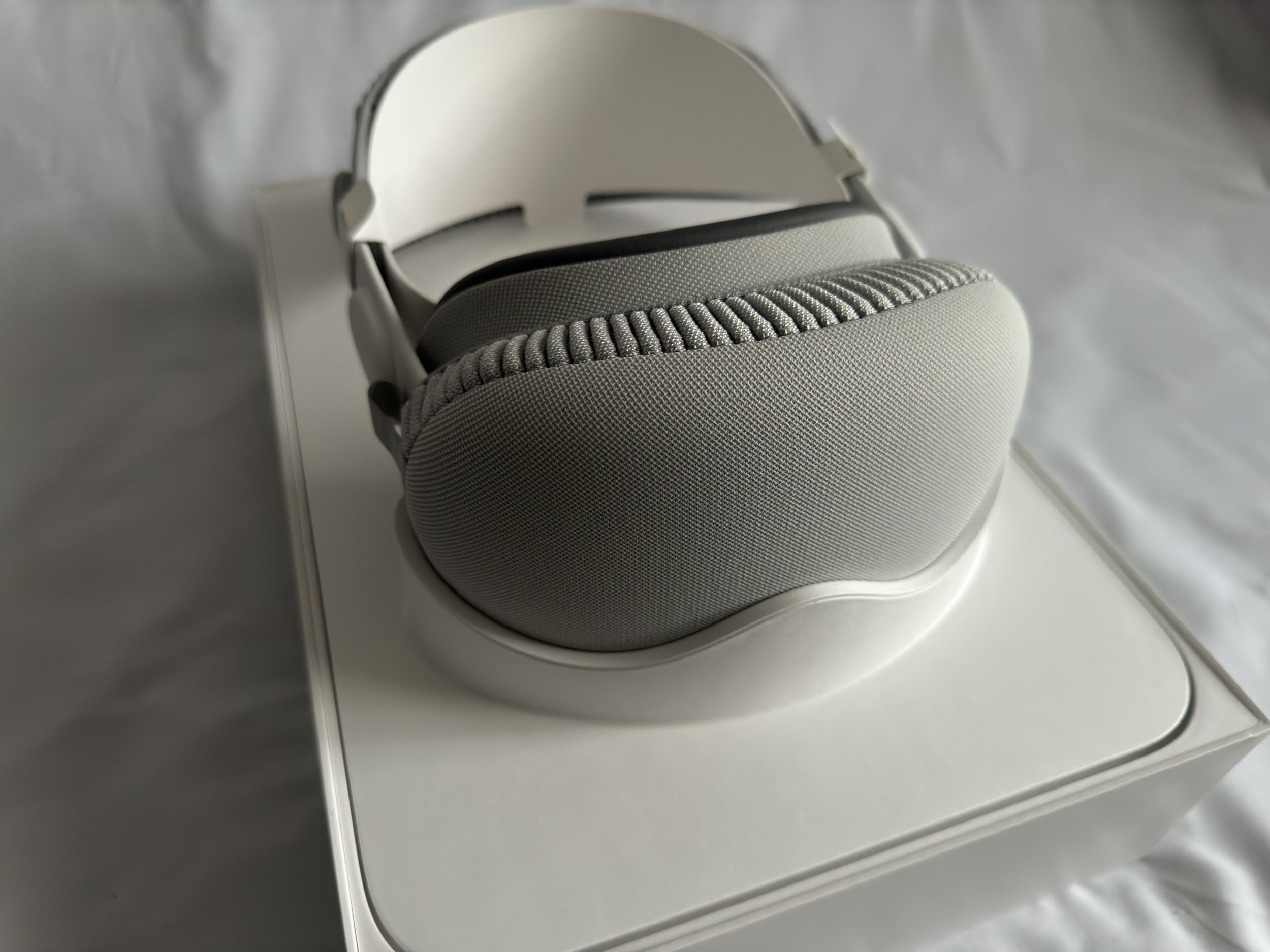
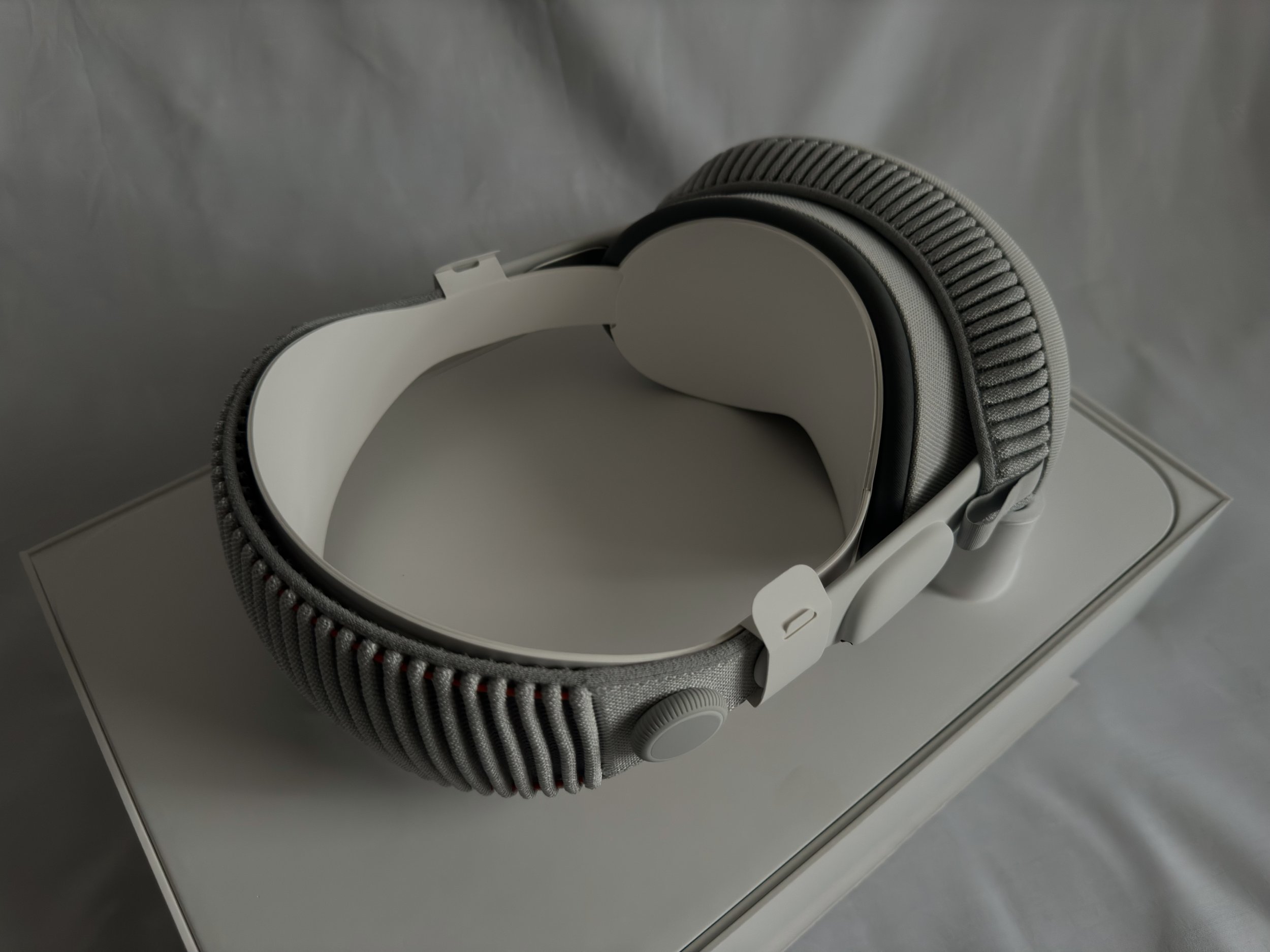
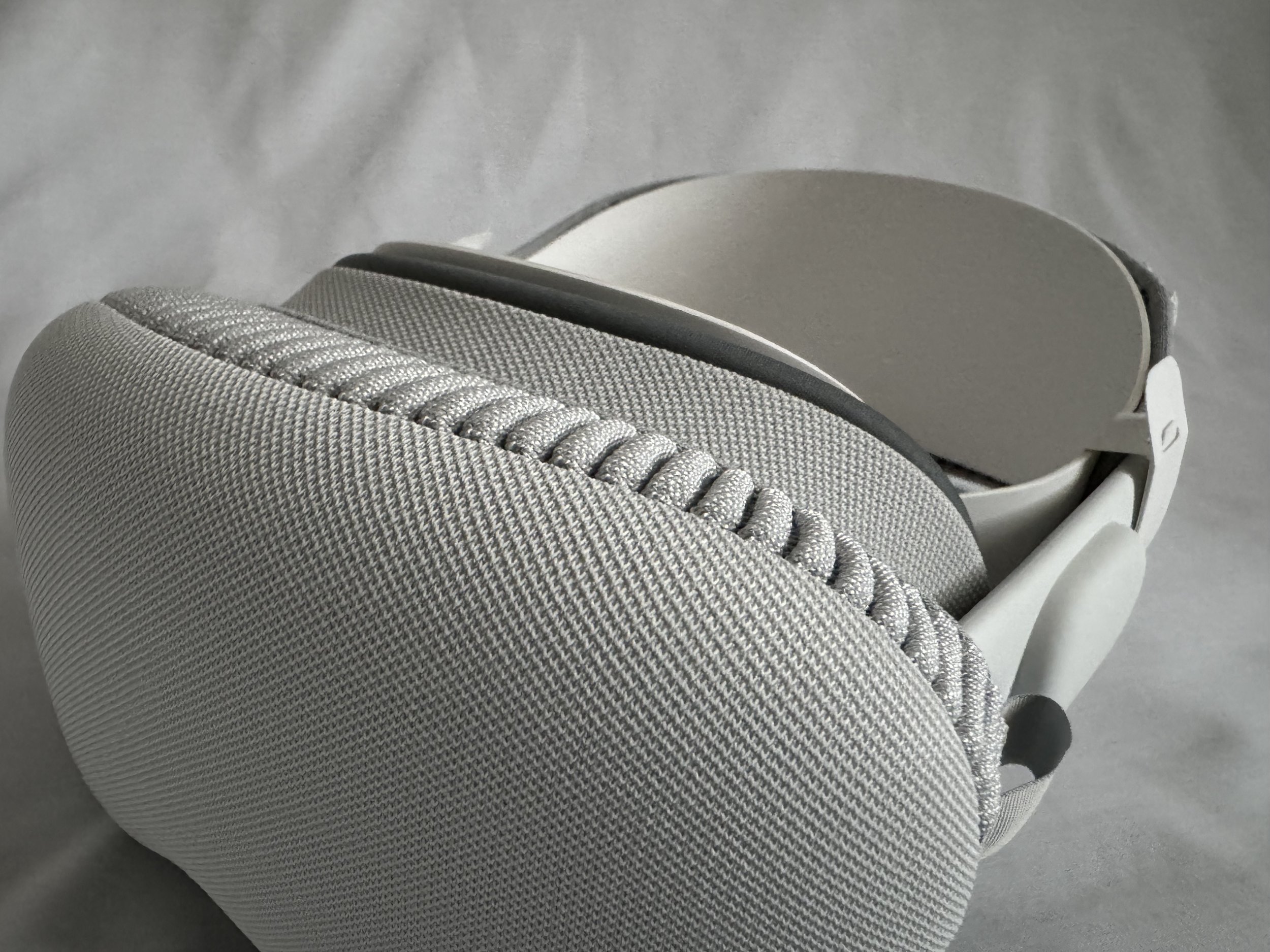
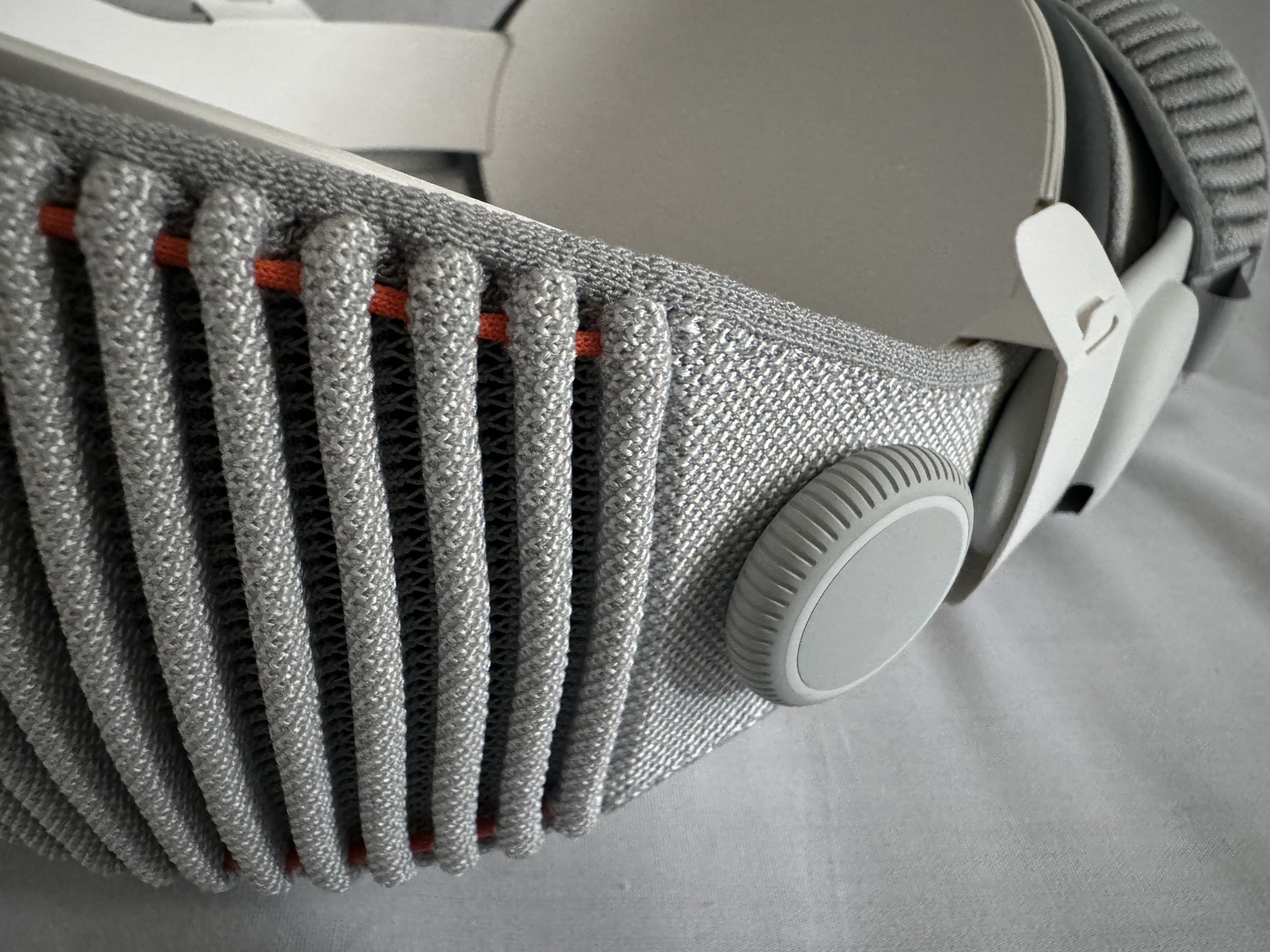
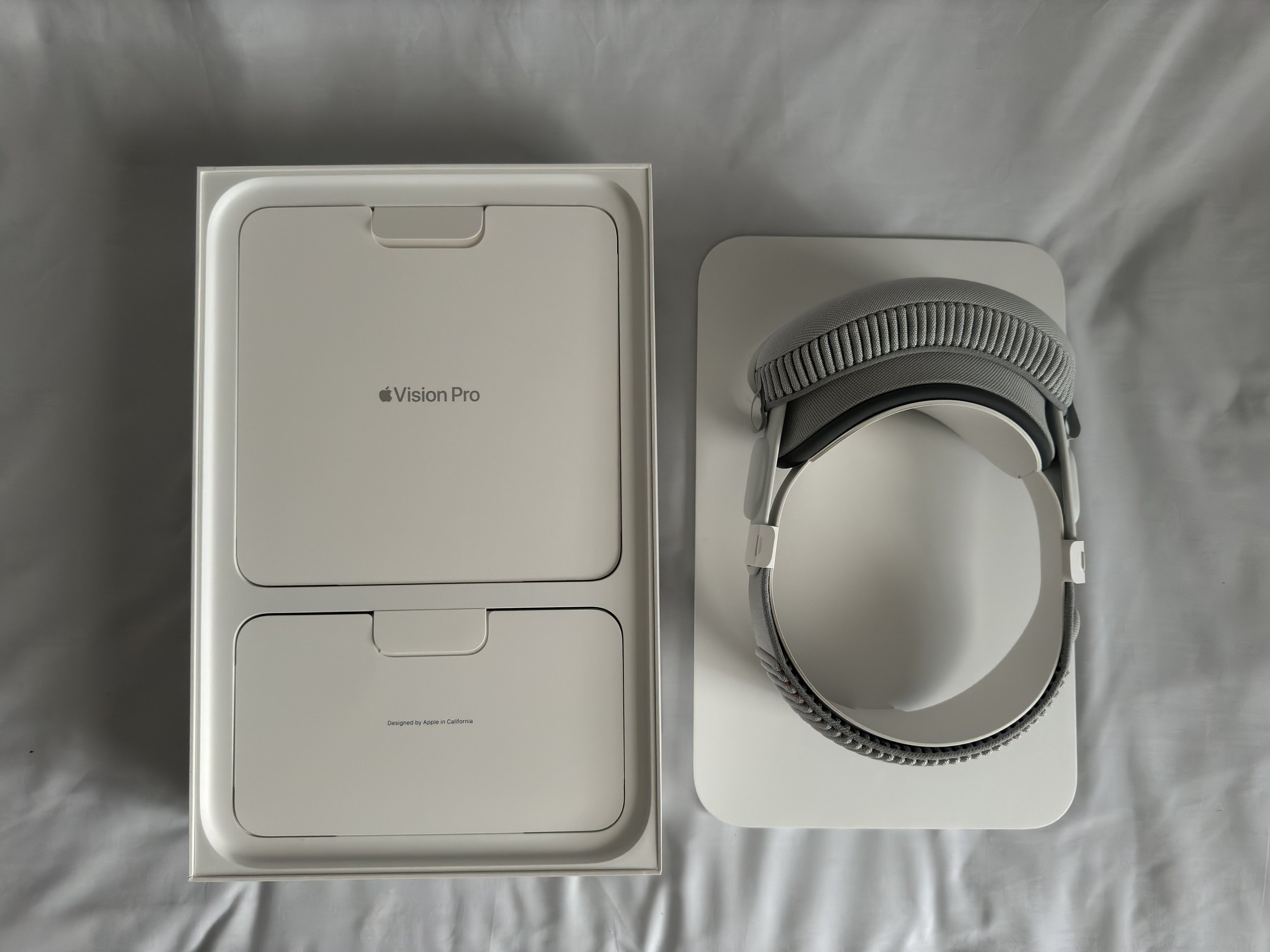
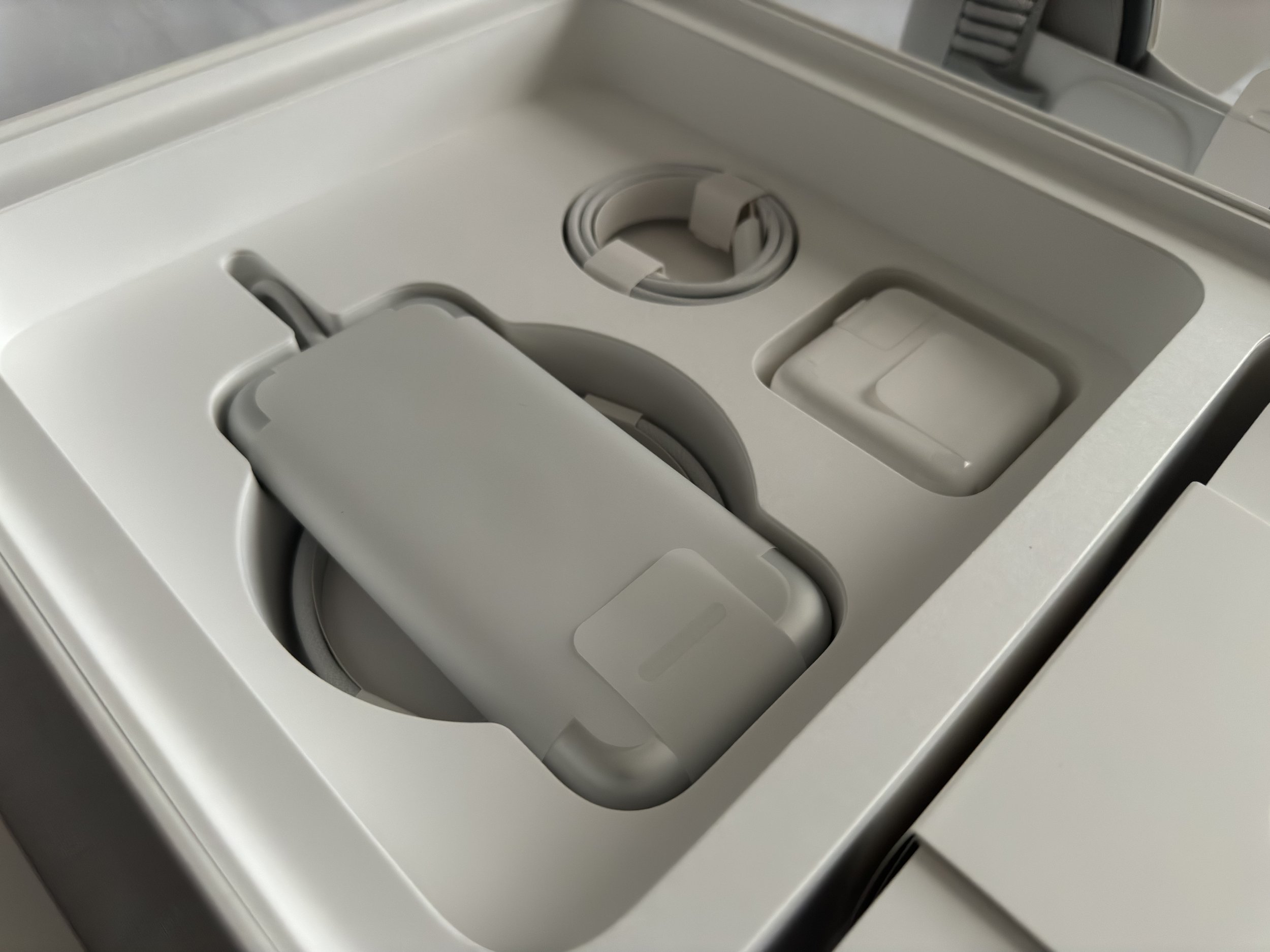
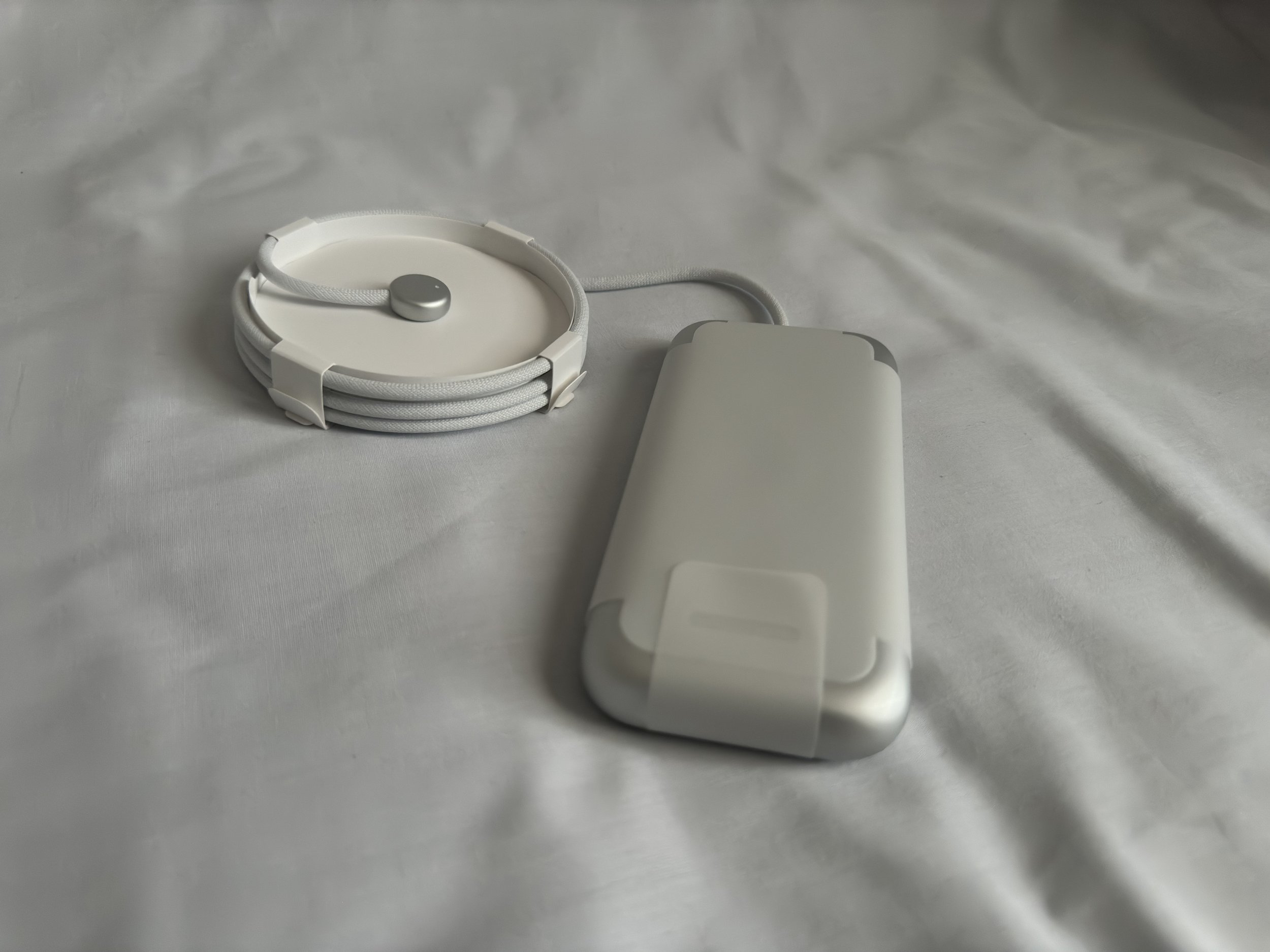
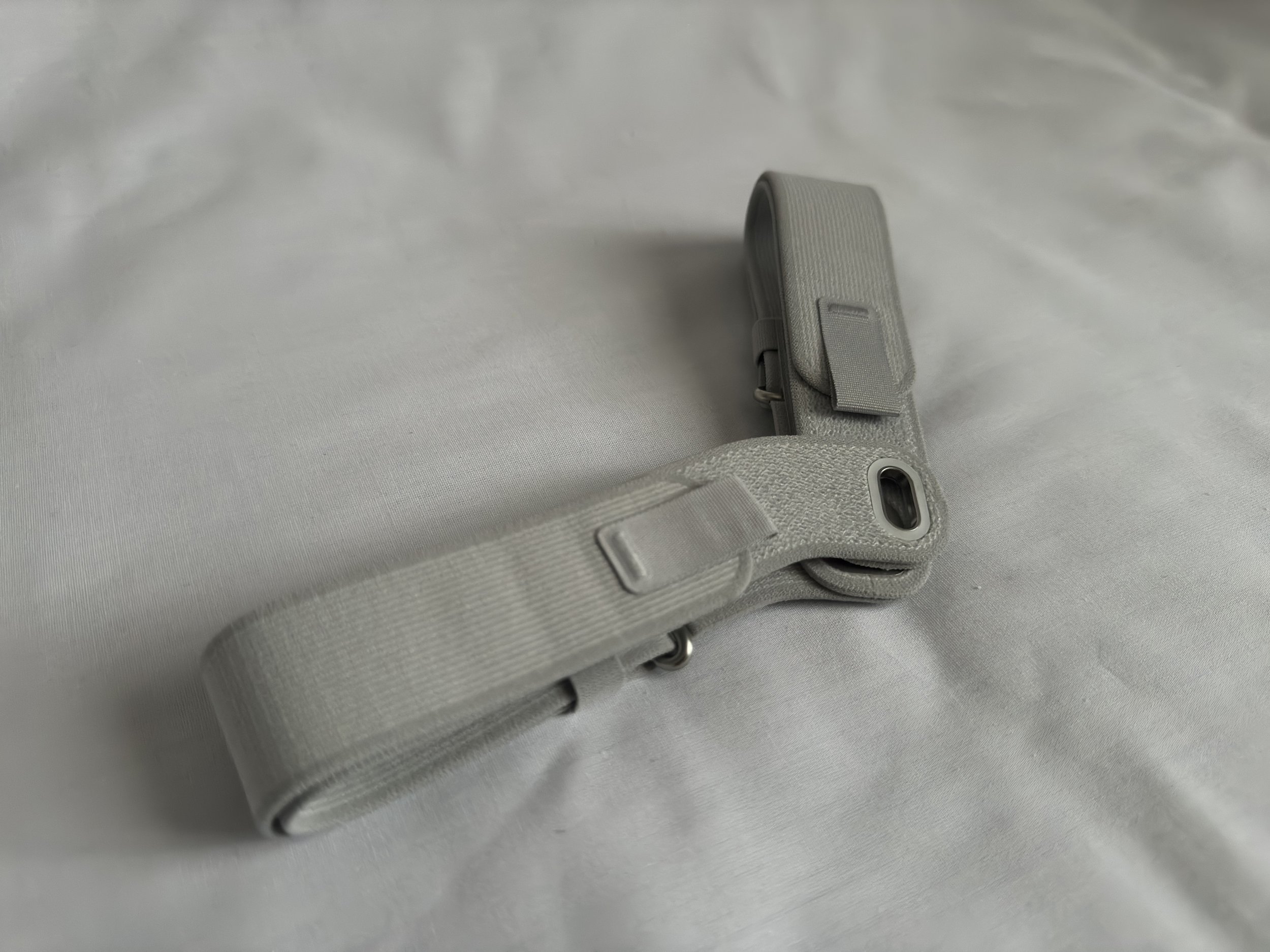
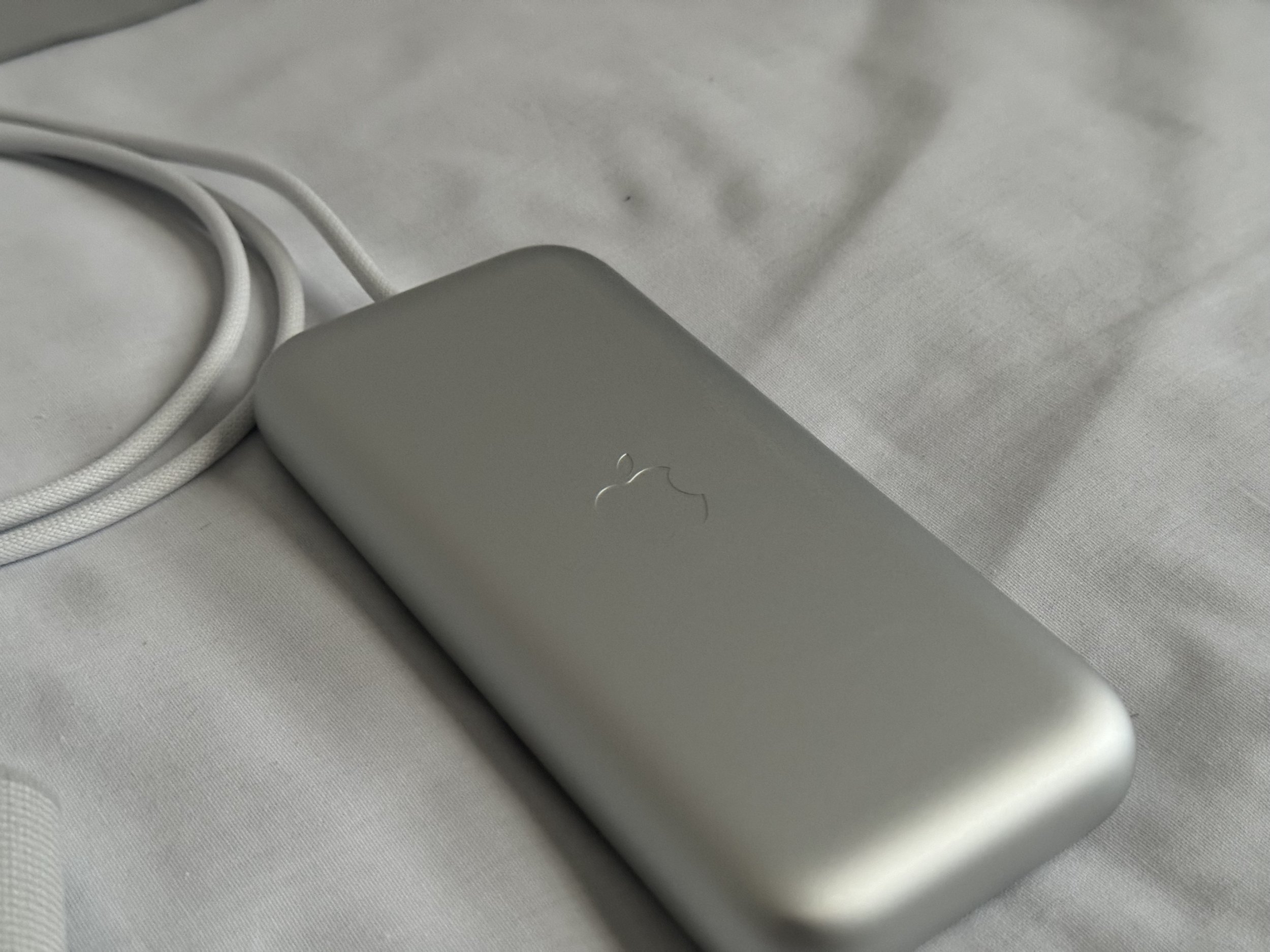


Set-Up
Setting up the headset was challenging at first. The Solo Loop headband didn't fit well. It was either too loose or too tight. Thankfully, there was a better band in the box!
Once I got past that, the setup process became exciting. The hand tracking was super cool, responding to my gestures smoothly. The eye-tracking feature was just as impressive, making navigation easy and intuitive. This tech felt like stepping into the future.
Creating a digital persona was interesting, but the result could have been better. The virtual me looked nothing like me—maybe 30% at best. It was a bit disappointing, but I reminded myself that this feature is still in beta and will improve.
On the bright side, setting up security features like the passcode and Optic ID was easy. These features were user-friendly and well-designed, ensuring privacy without any hassle.
Overall, the setup process had its ups and downs. The innovative hand and eye tracking opened up new possibilities. Still, the headband fit and the poor digital persona could have been more frustrating. Despite these issues, the easy-to-use security features showed that a lot of thought went into the user experience, leaving me with mixed first impressions—some great, some not so much.
First Impressions
The headset's build shows Apple's care for detail. The materials feel nice and comfy. The glass is smooth to the touch, and the soft mesh around your head feels both fancy and useful. This quality build makes the experience better, especially with the clear and bright screens. But the view was narrower than I thought, showing there's still room to improve.
Comfort was a big issue. The Solo Loop band had to be so tight it felt like a pulse band around my head. So, I switched to the Dual Loop strap for better comfort.
Exploring the headset's content library was a highlight. Downloading apps, from Disney+ to learning ones like Jigspace, was exciting. Even though some apps were missing, the device's ability to use iPhone and iPad apps and the promise of the Steam Link app opened up new options for work and play.
The augmented reality features were amazing, especially with "Encounter Dinosaurs." The dinosaurs felt very real, interacting with my surroundings in a deeply immersive way. It wasn't just a visual experience; it felt like they were really there.
Navigating the headset's features had its challenges. While some interactions, like using the digital crown or moving views, felt natural, others could have been easier. Closing panoramas and searching for content could be confusing at first. Still, once you learn the layout, it becomes second nature.
Overall, the headset combines great new ideas with the problems of first-generation tech. Its bright screens and rich content show its potential, but comfort and ease of use need improvement. The immersive moments, especially in augmented reality, highlight the exciting future of personal tech.
The Test
During the review period, I tested everything on VisionOS 1.0.2, the software running the headset. This was the backdrop for all my tests, covering Wi-Fi, benchmarks, gaming, and battery life. Each test added to the story of the headset's performance.
Wi-Fi
Testing Wi-Fi was important. I used an Eero 6E Access Point with Xfinity's 200-tier on the 5GHz band to see how the headset handled different distances from the router.
The signal was strongest at 3 feet, with the headset getting 216 Mbps download and 7.06 Mbps upload speed. At 7 feet, the download speed dropped to 164 Mbps, with an upload speed of 9.78 Mbps.
At 16 feet, surrounded by furniture, the device kept a download speed of 166 Mbps and an upload speed of 10 Mbps. Outside at 33 feet through walls, the download speed decreased to 140 Mbps, while the upload speed increased to 10.3 Mbps.
At 66 feet, the download speed dropped to 17.5 Mbps, with an upload speed of 6.82 Mbps. At 98 feet, the connection almost disappeared, with a download speed of 3.61 Mbps and an upload speed of 1.03 Mbps.
This Wi-Fi test showed how the headset handles different distances, from strong signals close by to weak signals far away. With connectivity sorted, I moved on to testing its performance using benchmarks.
Benchmarks
Geekbench
Geekbench is great for testing how well a device's processor and graphics card perform.
CPU Test
First, I ran the CPU test. Geekbench put the headset through tasks simulating everyday computing, scientific calculations, and encryption. The Single-Core test scored in the high 2400s, showing strong performance. The Multi-Core test scored in the 8100s, proving it can handle multitasking well.
GPU Test
The GPU test was supposed to check the headset's graphics and 3D rendering abilities. However, the app crashed, leaving me without results. It was unclear if this was due to incompatibility or the device protecting itself from a demanding task, adding a bit of mystery to our testing.
After Geekbench, I used Antutu for a more comprehensive performance check.
Antutu
Antutu is known for its thorough tests of CPU power, GPU capabilities, memory speed, and user interface fluidity.
In the first test, the headset scored 2,098,889 out of a maximum of 2,160,036, showing strong capabilities. In the second test, it did better, reaching 2,140,049, showing its ability to improve.
The third test brought a slight drop to 2,076,462. This variation showed the complex relationship between software and hardware. These scores highlighted the headset's strengths and areas for growth.
After Antutu, I focused on the graphics using 3D Mark.
3D Mark
During the review period, I used 3D Mark to test the headset's graphics. Known for tough tests, 3D Mark shows how well devices handle demanding digital environments. I ran two tests: Wild Life Extreme and Solar Bay.
Wild Life Extreme
In Wild Life Extreme, which simulates complex scenes, the headset scored 6,163 on the first try. The second test dropped slightly to 6,109, and the third test fell to 5,764. These scores varied but showed the headset's effort to handle high-quality graphics.
Solar Bay
Next was the Solar Bay test, simulating a journey through digital waves and solar winds. The headset scored in the high 7,000s: 7,689 on the first test, 7,645 on the second, and 7,692 on the third. These scores showed strong performance. However, the UI lagged a bit during these tests, though the pass-through feature worked perfectly.
Through 3D Mark, I saw the headset's impressive graphics capabilities and areas where it faced challenges. This test showed its strengths in handling visual tasks while highlighting some areas for improvement.
Battery
The headset's battery life is impressively resilient. It lasts over two hours of continuous use, which is great. Realistically, most people need a break from the virtual world after that long. During this time, I watched "The Secret Life of Walter Mitty" and "Tron" (one at a time). The headset's battery held up well, ready for more even after the movies ended. This balance of power and user experience shows the headset's well-designed endurance.
Gaming
As we explore our digital journey, gaming is the highlight. This part, full of excitement, takes us into a world where technology and imagination come together. Here, in virtual arenas and digital landscapes, we test the true strength of our device. We dive into gaming, where every pixel and frame rate adds to the story and virtual adventures.
This section featured various games, each showing what our headset can do. From thrilling races in "Asphalt 8" to the teamwork in "Sonic Dream Team," the headset's immersive potential was clear. Remote gaming platforms like Steam Link and PlayStation Remote Play added to our gaming journey.
Asphalt 8+
"Asphalt 8+" is an improved version of "Asphalt 8: Airborne." It offers over 250 high-performance cars on more than 50 exciting tracks. The game's graphics are stunning, with realistic interactions between cars and their surroundings, making each race feel real. The game is free from ads and in-app purchases, so players can enjoy the race without interruptions.
Sonic Dream Team
In "Sonic Dream Team," Dr. Eggman finds a device that turns dreams into reality. Sonic and his friends try to stop Eggman's plans in dream-like worlds. This game added an exciting chapter to the Sonic The Hedgehog series.
Oceanhorn 2: Knights of the Lost Realm
"Oceanhorn 2: Knights of the Lost Realm" is an adventure game by Cornfox & Bros. Released on Apple Arcade in 2019, it takes place in Gaia. Players fight against the Dark Army, solve puzzles, and win battles. The game pays tribute to "The Legend of Zelda" series and offers a unique mix of exploration and combat.
Steam Link
Valve Corporation's Steam Link connects the PC to devices like smartphones and smart TVs through the local network. This service turns the PC into a gaming hub, bringing different games to our hands and living rooms in real-time. The success of this streaming service depends on the PC's power, the network's stability, and the device's readiness, ensuring smooth gameplay.
MirrorPlay
Since there isn't an official Sony PS Remote Play for our headset, we used MirrorPlay, an iOS solution for streaming the PS5. This service, known for its low latency, allows remote gaming on the Vision Pro. It lets us play far from the console, even using mobile data, making gaming flexible and unrestricted.
Journals
Week 1
Disney+
Ah, Yes, the headliner Themselves, Disney+, is pretty cool. It works. It looks just like the iPad and Apple TV app. The environments are incredibly detailed; I wish they had more life. They barely move. It feels like you're watching a movie in a 3-D photo. Is it volumetric? Yes, but in the Tatooine environment, literally nothing is moving. It's weird to compare it to the Default environments when the water, trees, and clouds move. Now I know this is the first version of this app. There are 1000 environments Disney can use from all their franchise, but if they are all going to be like this: Lifeless, I pass; I'd rather watch Cars 2 on the Moon.
Crunchyroll
It's a simple native app that works but lacks features and environments. It's a minimally viable product, but there's only up from here.
YouTube (Safari)
It's doable but abysmal; I don't know if it's Safari or YouTube, but this is not a very good experience. The page keeps crashing. Safari keeps crashing, and lots of crashing is going on, But again, this visionOS 1.0
AppleTV/TV+
The Apple TV app has wholly transformed my movie and TV-watching experience! With the ability to make the screen 100 feet, it's like having a cinema right in your home! The picture quality is beyond incredible - it's pure Apple magic!
Music App
The speaker isn't loud at first, but when you get into the music or get distracted while playing in the background, the volume disappears, and it becomes reasonable.
Quirks
I tried the headset without the Light shield, and it's MAGICAL; it feels like glasses.
I can't really eat and watch Something inside due to the hand tracking; when you put your hand to your mouth holding Something, it usually scrolls... Annoyingly
Bugs
On five different occasions, the environment would randomly appear as pitch black.
Feature Request
The Ability To Disable Hand Tracking When holding Something
Use Machine Learning to detect when I'm holding Something versus when I actually want to select things
Allow The Video Streaming App To Fill the Screen Like The Native Apple TV Videos
Allow Apps to Get Even Bigger and further away
Double Tap the Bottom bar to return the app to its original size.
New Apps
I tried Juno, the YouTube app created by the creator of the app Apollo for Reddit, and it is a better experience. However, it needs to include significant features like being able to add video to a playlist, as well as like, subscribe, and such.
Week 2
Features
When you speak in an environment, the way your voice echoes depends on the acoustics. For example, in Hawaii, where the terrain is more rugged, your voice echoes more than in flatter areas.
Bugs
Whenever I try to use my headset outside, it disconnects from my phone's hotspot every 10 seconds, making it impossible to get anything done. (I was able to get it to work the next day, but I had to enable max compatibility (2.4 GHz) on my iPhone.)
Feature Request
Allow audio to come out of headset speakers when mirroring instead of Airplay destination.
Hardware Revisions
I hope version two and the next generation consoles will have Wi-Fi 7.
1 Month
Features
Watching Movies and TV Shows with Apple Vision Pro is Outstanding
Bugs
When you have the Apple TV app and Something else, open the Apple TV Apps Tents to flicker between the content and black when it's in your preferred vision.
FAQ’s and Q&A
-
The pass-through is around 50% of reality. With time and iterations of the Vision Line, it will improve. Hopefully, it won't increase to the price.
-
When connecting to the second-generation AirPods Pro, there are occasional Bluetooth drops, but once reconnected, they remain connected.
When I Comes To Wifi its pretty solid
-
Rarely, when juggling dozens of tasks simultaneously, in specific circumstances.
-
So far, I'd have to say, 'Encounter Dinosaurs.' It's amazing.
-
No, the displays are of such high quality and the UI Elements are so solid in 3D space that there is no sensation of disconnect between the eyes and brain, which would otherwise cause motion sickness.


